- Home
- Timothy Egan
Lasso the Wind: Away to the New West Page 6
Lasso the Wind: Away to the New West Read online
Page 6
As for the people already living there, that issue was in flux. There were an estimated twenty million natives in all of Mexico and Central America around the mid-sixteenth century. At one point, King Charles V suspended new expeditions into the Americas until the question of whether these people had souls or not was settled. A widespread view held that some races and groups were by nature set aside to be slaves to people of a higher order. This certainly was not a uniquely European concept. North American Indians, from the Haidas of the rain forests in southeast Alaska to the Apaches of the deserts of Mexico, raided and traded in human beings. The Spanish had their dark-skinned slaves, which they preferred to call servants, of Moorish and North African descent. Pope Julius II issued an encyclical in 1512 declaring that the native people of North America were more than muscle and fiber; in fact, he declared, they had souls. The bad news was, this meant that they were also burdened with Original Sin, thus putting them in urgent need of baptism, which would wipe the stain from their souls. So for many natives, the inaugural ritual of Christianity as practiced by sixteenth-century Spain came only after deciding it was better than the hellfire of eternal damnation or a torching from juniper twigs. Spain had forged a violent Catholicism. Its leaders, both spiritual and political, were tramping around the world forcing people to become Roman Catholics or die at the grill. This is still known, in some history books, as the golden age of Spain.
With a clean conscience, the Spanish Crown issued a cedula in 1583, authorizing the conquest, er, pacification, of New Mexico, for the purpose of saving the spiritually bereft. The stage was set for Acoma’s tangle with the last of the conquistadors.
IT TOOK Oñate six months to move fifteen hundred miles up the trail to New Mexico, the old Plus Ultra banners fraying in the desert wind. He had the kind of family background where the word “destiny” likely followed the word “mama.” He married a woman who was a descendant of both Montezuma and Cortés. His father, Cristóbal, had landed in those first Spanish boats to arrive in Mexico and had marched to the Aztec capital with Cortés. Oñate had done nothing of real substance in his entire life. He was desperate for the New Mexico entrada, and he brought along two of his adult nephews to share in the family triumph.
When he arrived, a few months shy of the last year of the sixteenth century, it marked the end of about five hundred years of relatively uninterrupted Pueblo life—a point that Oñate tried to make immediately. This time, the Spanish were not just visiting. They brought an army, cattle, building tools, and several walking levels of Roman Catholic Church hierarchy. Moving up the Rio Grande, Oñate set up the colony just north of modern Santa Fe, in a place he called San Juan de Caballeros. He then called together Indians from throughout the valley for what was known as the standard conquistador speech. The Pueblo people should consider their land occupied. There was much to learn from the Europeans. Most important, they could earn themselves a passage to heaven. But they had to submit. They had to give up the sun god talk and corn worship and kachina dances. They had to replace their sustaining myth—the southern exodus, shouting into sandstone walls waiting for an echo—with a new story, one of a predestined salvation at the hand of the One True Church. No one would be harmed, no women raped, no villages burned, if the people would take an oath of loyalty to the King of Spain.
Many of the Rio Grande villages, seeing an ally in their long fight with Apache and Ute raiders, took the pledge. One-by-one, the Indians came to kneel, kiss the hand of a priest, and then swear fealty to King Philip II. Acoma held back. They sent spies down to watch it, who then returned a hundred miles to the rock, reporting all they had seen. One bit of intelligence they brought back from the ceremony was that the Spanish fired off these massive metal weapons, the cannons and harquebuses, but they didn’t seem to do much harm.
In the fall, Oñate became restless, and set out to find an ocean that was supposed to be just west of the big New Mexico mountains, between the mainland and the Isola di California. He went through Zuni and Hopi country, and they seemed agreeable enough, despite what happened to Coronado. Then he came upon Acoma. It was, one of his men wrote, “the best situated Indian stronghold in all Christendom.” Though, of course, it was not Christian. Acoma was ancient, by New World terms; it had the settled rhythms, detailed oral history, the rigid religion, the too-familiar local powers, the cluttered byways, and the petty politics of a prosperous city that had been around for several hundred years. Consider the parallel to Avignon, in southern France. Avignon, another sky city, built atop a rock, was where popes lived for much of the fourteenth century. It had the same pretensions as Acoma, with, of course, much more of an army to back its conceits.
The people of Acoma believed in premarital sexual experimentation, war, and property rights, to a degree. They were generally monogamous, with family clans regulating marriage. Their main weapon was the big rock itself. Looking down at the high plains four hundred feet below, and across to Mount Taylor, then away west to the purple and blue horizon at day’s end, they believed themselves invulnerable. Nobody in their known world lived higher up than the Acomans.
Oñate pranced around the base of the rock, looking for a strategic advantage, wondering what such a conquest would mean back in Seville. The Acomans fretted. They had spent the summer beefing up their defenses. It was only a matter of time, they felt, after watching what happened in the Rio Grande Valley, before the conquistadors would attack. At first, Oñate tried the old superstitious Indian trick, which had worked well elsewhere. He knew horses were something of an exotic presence in the north. A few of Coronado’s mounts had gotten loose, but the Pueblos were still foot-bound. Oñate had his soldiers move their horses around, facing each other. He was trying to make it appear that horses could talk.
High above the chattering steeds, the Acomans considered their defensive strategy. They were going to roll boulders down from the perch, crushing the soldiers and their talking horses. But at the last minute, they decided to hold the stones. A delegation went down to see the Spanish, bearing gifts. Oñate and several men crawled up to the top. Once on the summit, the adelantado, or governor, of all the Kingdom of Nuevo Mexico, fired his big, unwieldy rifle. The harquebus made a great ka-boom, the sound bouncing off the walls of Enchanted Mesa, Acoma’s twin to the northeast. But again, nobody suffered a consequence, so the firearm was deemed harmless. Oñate gave The Speech, demanding that the Acomans subscribe to the Act of Obedience and Homage. At the end of the day, he clambered down the rock and left.
Two months later, in early December, Oñate’s nephew arrived at Acoma with thirty men on horseback. Captain Juan de Zaldivar wanted to trade for flour. This time, the Acomans seemed surly, telling Zaldivar it would be a few days’ wait while they ground the flour. When Zaldivar took his men to the top to pick up the bags, they were attacked. Acoma could wait no more; these men in beards and armor, with their pledges and threats, their talking horses and booming metal sticks, must go. Stones and arrows were fired in one direction, steel balls and swords the other. An Acoma warrior crushed the skull of Zaldivar. Soldiers were tossed from the cliff; others jumped. In all, eleven Spaniards died in the first battle of Acoma.
When news of the fight arrived back down at the Rio Grande, Oñate went into a rage. Acoma would pay, and the punishment would send a message to all of New Mexico. By Spanish protocol, he needed church and state justification to declare war, which the friars granted him. Three days after Christmas, he dispatched nearly a hundred soldiers for a war “by blood and fire.” His surviving nephew, Vincente de Zaldivar, would lead the attack.
When young Zaldivar arrived at the base of Acoma, he called on the Indians to surrender. Their response was a storm of stones, arrows, and ice chunks. Thereupon he issued a formal declaration of war. Trumpets blared, weapons fired, and the Spanish charged forth at the base of the impenetrable mesa. The large frontal attack drew the Acomans to the edge. At the same time, a small detachment led by Zaldivar sneaked around the rear, climbed up the ba
ckside, and mounted a surprise attack. For three days, they fought for the rock, a battle later celebrated in a Spanish narrative poem. Clubs pulverized skulls, and balls ripped apart chests. By the end of the first day, Zaldivar’s men had managed to haul one of their cannons up by rope to the summit. From then on, it was no contest, as the boom was no hollow sound. By the third day, the natives were in desperate retreat. The Spanish burned their homes, throwing wounded Indians over the side. Others committed suicide or killed their brothers and sisters, sons and daughters, in order to spare them death at the hands of the conquistadors.
In the smoke of the smoldering Sky City, the Spanish pronounced it a miracle. They had lost only one soldier. Acoma was nearly wiped out. The Place That Always Was lay in ruins. Nearly six hundred Indians had died. But the worst was yet to come.
The hands of the remaining men and the Acoma women and children were tied, and they were marched down the rock and east to the Rio Grande. It was freezing, in the dead of winter, the hard winds blowing from the north with snow squalls. At a village site on the river, the defeated Acomans met the victorious Oñate. They would now stand trial for the crime of breaking the Act of Obedience and Homage, though most of them had never taken any such oath. They were given a defense counsel who pleaded a sixteenth-century version of insanity: the Indians were uncivilized, he said, and therefore incapable of knowing what they had done. The outcome was never in doubt, and after a three-day trial, a guilty verdict was pronounced. Then Oñate issued his sentence.
Men over the age of twenty-five were to have one foot cut off and spend twenty years in personal servitude.
Males from age twelve to twenty-five were condemned to twenty years as slaves, as were women of the same age. This amounted to war booty for the soldiers who had found no silver bars in New Mexico. As Oñate said, “I order that all the Indian men and women who have been sentenced to personal servitude shall be distributed among my captains and soldiers in the manner which I will prescribe and who may hold and keep them as slaves for the said term of twenty years or more.”
Two Hopis—then called Moquis—who had been captured on the rock were each sentenced to amputation of the right hand. They were ordered to return to their tribes with their bloody stumps as graphic warning.
Children under the age of twelve were given to the friars for Christian schooling. Sixty of them were later sent to convents in Mexico City.
And that was it. The book was closed. There would be no appeal, Oñate said, “this being a definite and final sentence I so decree and order.”
Over a period of days, in front of crowds of Indians, men had their feet hacked off or their hands amputated. Slaves were given over to the soldiers. And the Kingdom of New Mexico, breached in blood and blessed by bishops a full generation before an Englishman tied up on the Massachusetts coast, was ready to enter its second year. Four hundred years later, the West has the lowest rate of church participation of any region in the country.
YOU HEAR the bells ringing at the old mission tower atop Acoma this morning, the sound drifting out of the rock-and-dirt tower and falling away in the winter air. Nobody bothers to look up from what they are doing in the pueblo. The bell was a gift from the King of Spain. Beyond that, there Is barely a remnant scrap from the empire that won the battle at Sky City. As it was before 1540, the pueblo is still governed by a cacique, and Acomans still look to the snows of Mount Taylor for divine inspiration, and to the neighbor of Enchanted Mesa for spiritual sustenance. They talk about the sun and corn and water, as always, as parts of a world in which everything fits. And they talk about these things in English, but also in Keresan—the same language that was used while searching for the Place That Always Was. You hear very little Spanish spoken atop Acoma.
Even if Oñate had not made a second entrada, the river of Western history already had jumped channels, never to return to the old course. The Spanish brought horses, and the effect on North America was not unlike what happened after Henry Ford started mass-producing the Model T. From the Rio Grande, the tough desert mustangs, a Moorish breed, spread north. They ran wild, living on prairie grass and desert sage. With horses, the Plains Indians went from being part-time hunters to big nomadic tribes, chasing bison across far-away river drainages. The ripple spread to their social structure. It was men’s work to hunt, women’s to tan the hide. More women meant more hides. Monogamy faded; polygamy became tolerated, as did increased raiding and slaving to build up a harem of forced-work hide-tanners.
The Apaches, effective raiders on foot, became feared desert pirates on horseback, forcing Pueblo Indians to look south for allies. The Utes, Shoshone, and Arapaho roamed over an enormous area of the Great Basin with their hoofed mounts. Horses were glorified in rock art and ritual. By the early 1700s, horses had crossed the Continental Divide deep into the Pacific Northwest and were used by Yakamas and Nez Perce, who would later be known for their own hybrid, the Appaloosa. The Blackfeet moved out of the central Plains and started to set up camps across the raw country of northern Montana. All of this flowed from the few horses that had gotten loose from the Plus Ultra marches up the Rio Grande.
It took nearly four hundred years for the population of Acoma to reach what it had been when the Spanish first took a count; about a thousand people were recorded just before World War II, the same as in 1540. Barely a year after Acoma men had had their feet cut off and been ordered into bondage, the Sky City resumed many of its old rituals. Some Acomans had never left. But, more remarkably, the condemned ones, the men with a single foot and a severed stump, had also made it back. That part of the city that had been destroyed was rebuilt, this time of adobe brick—a technique learned from the friars.
Acoma lives up to its name. As for Oñate, he left his mark—a disputatious note in the desert. The only physical evidence remaining from the first governor’s reign is the hieroglyphic scratching on a rock north of Acoma, called El Morro. It is still visible.
“Passed by here the Adelantado Don Juan de Oñate from the discovery of the South Sea on the 16th of April 1605,” he wrote, in Spanish. He said he discovered the Gulf of California, having dipped his toe in the brackish waters. But the Spanish had already been there. In the end, desperate to achieve something other than a court-martial and ridicule, he was chasing another rumor—that men lived underwater at the far edge of the desert.
The “poor, isolated, cold and unlovely Kingdom of New Mexico,” as Oñate’s biographer Marc Simmons put it, went through drought, food shortages, and finally a mutiny. You can’t eat a patent of hidalgo, the low-ranking noblemen-to-be concluded. After several years of grubbing and bitterness, the settlers fled south. Oñate sent Zaldivar after them, with orders to cut off their heads. But they made it safely back to New Spain, where they told of the tyrant Oñate, an adelantado out of control. He had, they said, thrown an Indian out of a second-story window in Santa Fe, among his recent fits of rage. Much later, back in Mexico City, Oñate was found guilty of numerous crimes, among them cruelty to the Indians at Acoma. He spent the remaining decade of his life trying to save his reputation. A man of nearly eighty, the last conquistador was reduced to a piteous figure in Madrid, begging the royals to grant him a pardon, or at least listen to his story one more time. Gradually, with great regret, the Cities of Gold were erased from the map of Nuevo Mexico. In their place, scrawled over a great area, the Spanish labeled most of what they had seen in the American Southwest as simply despoblado, an unpeopled howling wilderness.
OVER TIME, the forced weave of two cultures took hold. There was enough of the Old World that the New World liked. Horses would stay, as would some farming techniques, and orchards. To this day, an Acoma peach is a summer treat, distantly descended from a Spanish fruit. New Mexico has most of the strands of the modern West, with a heavy Spanish and Pueblo texture. Its cities are full of urban exiles looking to the glow of nearby mountains to put an extra dimension in their lives. People run up and down mesas, trying to squeeze meaning from the land. New Ager
s come and go, sampling the rarified air but never letting it get into their bones.
Acoma goes on; it has no other way. A handful of people attend Mass at the mission built in 1629, while men in long black hair track the motion of the sun. The secret to old age in the West? Find your place, dig in, and defend it, just as Gary Snyder said. The Spanish thought this land, these views, this air, was foreign. Today, Europeans make up the bulk of visitors who marvel at the red rock, the wondrous light, the fact that in the American West, where trailer parks have historical designations, something shaped by human hands is still standing from a thousand years ago. In Avignon today, at the Palace of Popes, the walls are covered with graffiti; like French rock ‘n’ roll, it is a bad combination. Nothing of any real religious significance emanates from inside the stone fortress in Provence. Acoma never had the power of Avignon, but it still controls its small universe. It is not a reservation, a ruin, a ghost town, a toxic Superfund site, or a faux-Indian theme park. It is a city in the sky, looking out to the world as before, the Place That Always Was.
CHAPTER 3
A Colorado River Town I
Lake Havasu City, Arizona
Under the dancing summits of the Chemehuevi Mountains, the Colorado River is a pane of flat water providing a midday illusion. Heat, evaporation, white sky—and just like that, I’m watching a retro skit from Monty Python. Already, it is more than 100 degrees outside in the Arizona spring, and not yet noon. I have been in the Mojave Desert long enough that I wave back at Joshua trees. Now, here is Olde England rising from the sand at rivers edge. Pink-faced people with silly walks are dashing to and fro among the paloverde. I see Sherwood Forest Nursery, go past inns named for the British Royal Crown and for Shakespeare. There is a Queen’s Bay Golf Course, a King’s Retreat, a London Arms Pub, and at the town center, the inspiration for the architectural alchemy, is London Bridge. Not a faux, Vegas-style re-creation, like those that have taken root up the river, in Laughlin. But a seven-hundred-foot span of granite that has been transplanted, stone by stone, from the Thames to the Colorado. If Acoma is the Place That Always Was, Lake Havasu is the Place That Doesn’t Know What to Be. It is trying to be Europe in the West, perhaps, importing grandeur to a land without self-esteem.

 The Immortal Irishman
The Immortal Irishman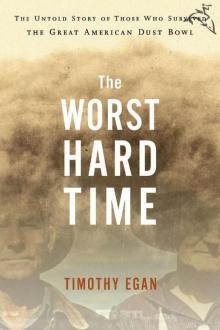 The Worst Hard Time: The Untold Story of Those Who Survived the Great American Dust Bowl
The Worst Hard Time: The Untold Story of Those Who Survived the Great American Dust Bowl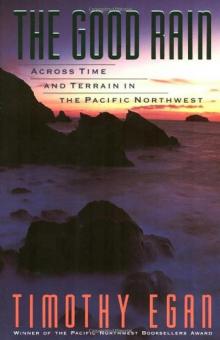 The Good Rain: Across Time & Terrain in the Pacific Northwest
The Good Rain: Across Time & Terrain in the Pacific Northwest Breaking Blue
Breaking Blue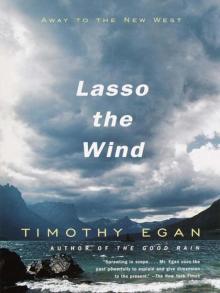 Lasso the Wind: Away to the New West
Lasso the Wind: Away to the New West The Big Burn: Teddy Roosevelt and the Fire That Saved America
The Big Burn: Teddy Roosevelt and the Fire That Saved America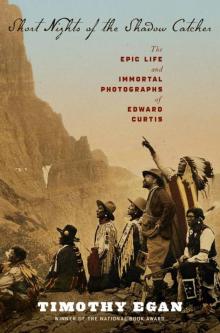 Short Nights of the Shadow Catcher
Short Nights of the Shadow Catcher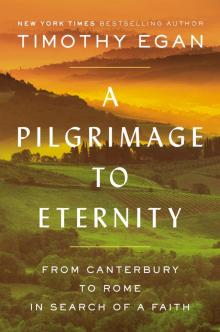 A Pilgrimage to Eternity
A Pilgrimage to Eternity The Worst Hard Time
The Worst Hard Time The Big Burn
The Big Burn